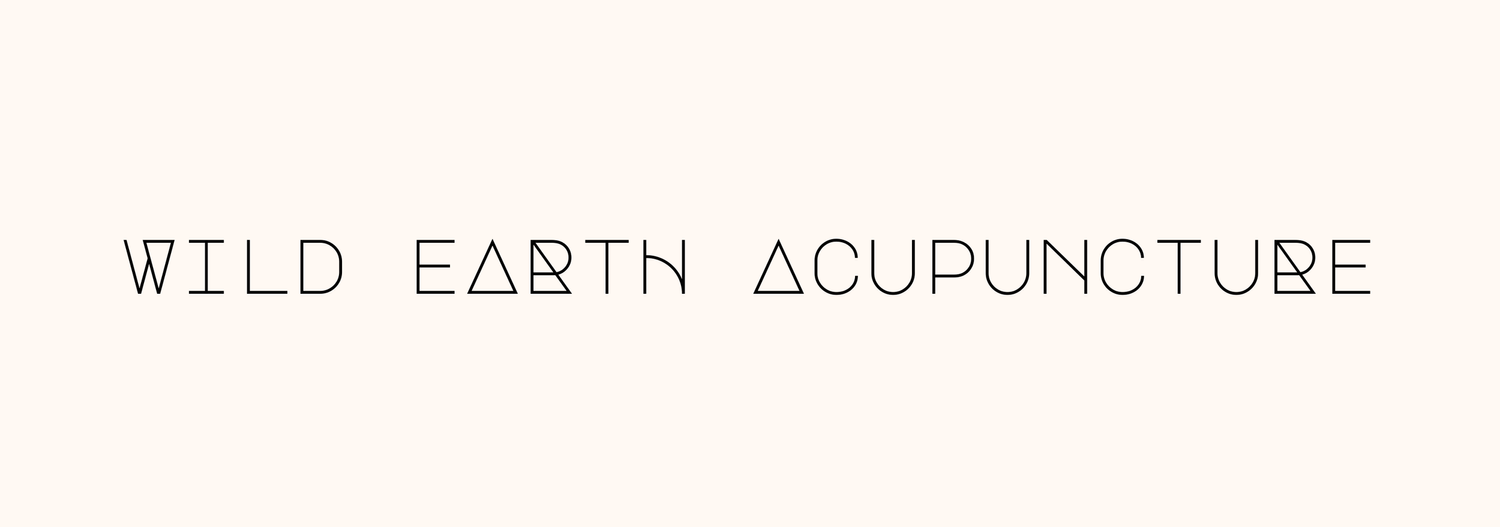Facial Cupping
Facial Cupping: Benefits, How to Do It, and Cautions
Facial cupping has surged in popularity as a non-invasive way to promote glowing, healthy skin. This technique, rooted in ancient Traditional Chinese medicine (TCM), uses small cups, made of glass or silicon, to create gentle suction on the skin, enhancing circulation and helping to rejuvenate the face. Let’s explore the benefits, how to perform facial cupping at home, and essential cautions to keep in mind.
What Is Facial Cupping?
Facial cupping is a skin-care practice that involves placing specialized small, cups on the face. By creating suction, the cups lift and stimulate the skin, encouraging blood flow and the movement of lymphatic fluid. This practice promotes healing and balances the flow of energy within the body, particularly on the face, or whereever the cupping is performed.

Benefits of Facial Cupping
Improves Circulation
The suction of the cups draws blood to the surface, improving oxygenation and delivering vital nutrients to the skin cells. This enhanced circulation can result in a brighter complexion and healthier-looking skin.
Boosts Collagen Production
Stimulating the facial tissues helps to boost collagen and elastin production, which are essential for maintaining skin elasticity. This can reduce the appearance of fine lines and wrinkles.
Reduces Puffiness and Inflammation
Facial cupping is effective at reducing puffiness by promoting lymphatic drainage. It helps to clear out toxins and excess fluids, leaving the skin refreshed and toned.
Relieves Tension
The suction can also ease muscle tension in the face and jaw, which is particularly beneficial for those who grind their teeth or suffer from tension headaches.
Enhances Product Absorption
By stimulating the skin and opening pores, facial cupping can help skincare products penetrate deeper, allowing serums and creams to work more effectively.
How to Perform Facial Cupping at Home
Performing facial cupping at home is simple, but it’s important to follow the proper technique to avoid bruising or damaging the skin.
Step-by-Step Guide:
1. Cleanse Your Face- Start with a clean face to remove dirt, makeup, and oil.
2. Apply Oil- Use a nourishing face oil to ensure the cups glide smoothly. Oils like jojoba, rosehip, or argan oil work well. This also helps protect the skin from the tugging motion of the cups.
3. Choose the Right Cups- Use small, soft silicone or glass cups specifically designed for facial cupping. These are more gentle and safe for the delicate skin of the face.
4. Create Gentle Suction- Gently press the cup against the skin and squeeze slightly to create a light suction. Move the cup in upward, sweeping motions, working from the center of the face outward toward the ears and hairline.
5. Focus on Different Areas- Spend time on the cheeks, jawline, forehead, and under the eyes, but be extra gentle around the delicate eye area.
6. Timing- Perform facial cupping for about 5-10 minutes once or twice a week. You should feel a gentle pulling sensation, but it should never be painful, or leave marks.
Cautions and Contraindications
Facial cupping is generally safe, but there are some important precautions to keep in mind:
Bruising- Applying too much suction or staying in one area for too long can cause bruising. Keep the cups moving to avoid this.
Sensitive Skin- If you have sensitive or rosacea-prone skin, use the lightest pressure and proceed with caution.
Avoid Active Breakouts- Don’t perform facial cupping over acne, open wounds, or inflamed skin, as it could aggravate the condition.
Consult a Professional- If you’re unsure about trying it at home, consider visiting a licensed practitioner for professional facial cupping treatments.
Body vs. Facial Cupping: What’s the Difference?
While cupping is often performed on areas like the back, neck, and shoulders to relieve muscle tension and stagnation, the technique differs significantly when applied to the face. For body cupping, the marks left behind—often deep red or purple—are seen as a sign of releasing stagnation and toxins from the body. These marks can last several days and are considered a normal part of the healing process.
However, when it comes to facial cupping, you should avoid leaving any noticeable marks. The goal is to achieve only a light red hue, if anything at all, indicating improved circulation rather than stagnation release. If you notice deeper red marks or bruising on your face, it’s a sign that the suction is too strong. Always aim for a gentle, gliding motion with minimal suction to protect the delicate facial skin. This gentle approach ensures that facial cupping provides rejuvenating benefits without any risk of damaging the skin or leaving unwanted marks.
Facial cupping is a natural and non-invasive way to boost your skincare routine. With benefits ranging from improved circulation to tension relief, it’s a versatile practice that can leave your skin glowing and rejuvenated. Just remember to follow the proper techniques and consult with a professional if you have any skin concerns.
FAQs
1. Can facial cupping help with wrinkles?
Yes, facial cupping stimulates collagen production, which can help reduce the appearance of wrinkles over time.
2. Is facial cupping painful?
No, when done correctly, facial cupping should not be painful. You should only feel gentle suction.
3. How often can I do facial cupping?
It’s recommended to perform facial cupping 1-2 times a week for the best results.
These foundational books offer a clear and accessible path into the world of Acupuncture and Chinese Medicine. Whether you're studying to become a practitioner or simply curious about the theory behind the treatments, these titles will deepen your understanding and appreciation for this ancient healing system, one thoughtful page at a time.
The article goes over the best professional massage tables available for acupuncturists, massage therapists or other bodyworkers. A long-lasting and high-quality table is key!
This article explains the basics of abdominal self-massage. It is a great option for increasing self-care, digestive complaints, reproductive issues or low back pain.
Spleen Qi Deficiency is a very common imbalance in Chinese Medicine. This article explains what that means, and what to do about it. It offers lifestyle suggestions as well as food choices, while giving an extensive overview of the theory attached from TCM.
Discover how acupuncture can calm your mind, balance your body, and support lasting relief from anxiety. Learn what to expect in a session, how it works, and why more people are turning to this natural solution for modern-day stress.
By recognizing the manifestations of dampness, identifying its signs and symptoms, and incorporating dampness-clearing foods into your diet, you can work towards restoring balance and promoting overall well-being. This sticle will explain signs and symptoms of Dampness, and offer a few solutions.
This article explains the benefits of cosmetic acupuncture and what t o know if you are also engaging in other aesthetic procedures.
This article explores the mind-body connection in Chinese Medicine, a concept known as the Shen. It helps explains the 5 aspects of the Shen and their links to Organ Systems and meridians.
This article explains the transformative power of the CHIRP Wheel, a unique spinal relief tool designed to prevent excess pressure on the spine while targeting muscles on both sides of your neck and back. It also offers simple steps for a safe and effective experience!
Learn about Kidney Yang Deficiency in Traditional Chinese Medicine, including signs, symptoms, food choices, and lifestyle tips to restore balance and vitality. Discover a warming recipe to support Kidney Yang health.
This article explains the Liver Organ System in Chinese Medicine.. and goes into detail about its functions and importance upon governing the smooth flow of Qi, and hence overall well-being.
This article explains the importance of the fascial network and ways to access it for better health.
Intro to Red Light Therapy (RLT) and its benefits when used in conjunction with acupuncture.
Traveling the world with children is such a rewarding experience, albeit sometimes stressful. Being prepared with natural remedies and a proper first aid kit is essential!
In this article, we dive into the essence of the San Jiao and its significance as three distinct divisions, and one complete system, of the body.
🔥 Your Guide to Safely Practicing Moxa at Home 🔥
Curious about moxa but not sure where to start? This easy, step-by-step guide will show you how to safely use moxibustion at home to ease pain, warm your body, support energy, and especially boost digestive function.
Perfect for beginners and seasoned wellness lovers alike, it’s packed with practical tips, clear instructions, and everything you need to feel confident and cared for. This guide is focused on using premade moxa poles, especially for digestive health and pain relief.
✨ Simple. Soothing. Rooted in tradition.
👉 Download now and light up your self-care routine with the warmth of tradition!
🌿 Love What You See? Want It All? This bundle was made for you! 🌿
Get the ultimate herbal wellness collection in one beautifully curated package. This bundle includes:
✨ Essential Tastes Cookbook – Explore the Five Flavors of TCM through immune-boosting, nourishing recipes.
🥗 Spleen Qi Meal Planners – Two full weeks of meal plans (vegetarian and non-vegetarian) to support digestion and energy.
🫙 Herbal Pantry for Everyday Wellness – Learn the top 10 must-have herbs and exactly how to use them at home.
Whether you’re just starting your herbal journey or deepening your practice, this bundle gives you the tools to nourish your body, mind, and spirit—season by season, meal by meal.
✨ Save big and empower your kitchen with centuries of wisdom—naturally. ✨
$70 value for only $45!
Poor digestion got you down?
This weekly meal planner is focused on helping support your digestive system and boost your Spleen Qi.
7 days of meals, recipes and tips!
It comes designed in a PDF format for easy printing- so you can pop it on the fridge for inspiration, or take it to the market with you while you shop.
It comes stocked with:
🗓️ Easy-to-follow weekly meal planner with tasty suggestions for breakfast, lunch, dinner, and snacks each day of the week.
✔️ Grocery checklist
🌿 Helpful tips to help keep your tummy happy.
😋 Yummy recipes
This guide will get you off to the right start!
Check out the new Vegetarian Weekly Planner for another week of delicious recipes ( very easy to add some baked chicken or roasted salmon etc. to any of those recipes too!
🚨UPDATED WITH EVEN MORE DELICIOUS RECIPES!🚨
Prepare to embark on a transformative journey towards enhancing your fertility naturally with the nutritional outlook of Chinese Medicine. This book is the key to nurturing your body, and balancing your hormones.
🍲 Nutrient-rich recipes to nourish your body
🌱 Traditional Chinese Medicine wisdom for hormonal balance
💫 Tips to support your fertility journey
📖 Expert insights on holistic well-being
⭕️ Seed Cycling and more!
Incorporating herbal medicine into your routine doesn’t need to be complicated.
Start small.
Make a cup of tea. Stir herbs into your soup. Tune in to how you feel.
The beauty of herbal wellness lies in its simplicity and its ability to bring you back into relationship with nature, moment by moment.
Welcome to ✨ HERBAL PANTRY for EVERYDAY WELLNESS✨
This guide introduces the TOP 10 Herbs every budding herbalist needs in their pantry to help elevate your health!
Created by licensed acupuncturist and herbalist Lenore Cangeloso, this beautifully crafted ebook blends Traditional Chinese Medicine wisdom with modern, approachable recipes.
From calming teas to immune-boosting broths and beauty elixirs, you’ll learn how to bring the healing power of herbs into your daily life with ease and intention.
✨ Start your herbal journey today—naturally, simply, and rooted in tradition. ✨
Your Daily Dose of Herbal Concoctions
DRINK ME is your go-to guide for crafting nourishing, restorative, and delicious elixirs right from your kitchen.
🔥 Inside, You'll Discover:
✅ Easy-to-follow recipes for energy, immunity, digestion & relaxation
✅ The healing properties of herbs & how to combine them effectively
✅ Tips to make herbal infusions, decoctions, and tonics like a pro
💚 Whether you're a herbal enthusiast or just getting started, this ebook will help you create powerful, plant-based remedies to support your mind, body, and spirit.
📥 Grab your copy today and start sipping your way to wellness! 🥄🌸
👉 Download Now
Boost Your Spleen Qi with Ease!
This weekly meal planner is your ultimate guide to nourishing your body and supporting your Spleen Qi with wholesome, vegetarian meals.
✨ What’s Included:
A Full Week of Meals: Holistic recipes for breakfast, lunch, dinner, and a daily snack.
Easy-to-Use PDF Format: Perfect for printing to place on your fridge or take to the market.
Helpful Tips and Inspiration: Stay motivated with handy hints and guidance.
Delicious Recipes: Enjoy a variety of meals that are both nourishing and satisfying.
Transform your meals into tools for better health and vitality—all while keeping it simple and vegetarian-friendly. 🌱
Skin Deep Beauty- Get Glowing, Radiant Skin with Traditional Chinese Medicine
A step-by-step guide to level up your skincare.
—
⭐️ Packed with information to make natural and informed choices
⭐️ Guides to guasha and other amazing techniques
⭐️ Yummy recipes to get glowing from the inside out
⭐️Easy fun recipes for natural skin care
⭐️Afirmmations and more!
This easy-read handbook is a complete guide to dealing with “Liver Qi Stagnation”. It explains what Liver Qi stagnation is and offers various ways to help…
🍵Simple Dietary Advice
☺️Easy Lifestyle Changes
💜Nourishing Self-Care Routines
🏃♀️Gentle exercises
and
📖Delicious Recipes
A nutritional guide that leads you into the importance of the Five Flavors, from the lens of traditional Chinese Medicine. This book also offers a few great recipes to help incorporate this theory into your life and kitchen!
This guide offers:
🌿In-depth explanation of the Five Favors from a TCM perspective and how they impact physiology and digestion.
❣️ Basics of TCM theory and nutritional outlook
😋 Yummy recipes for each flavor profile
🍂 Seasonal Eating Tips
🧘 Mindfulness Prompts
Hardcopy available via Amazon.
Lenore Cangeloso is a Board Certified Acupuncturist, Clinical Herbalist and avid writer based in Southeast Portland.








































Bone broth is valued all over the world for its delicious taste and highly nutritious components. It is rich in vitamins, minerals, collagen, gelatin, keratin and stock full of amino acids. Read on to learn a super easy recipe!